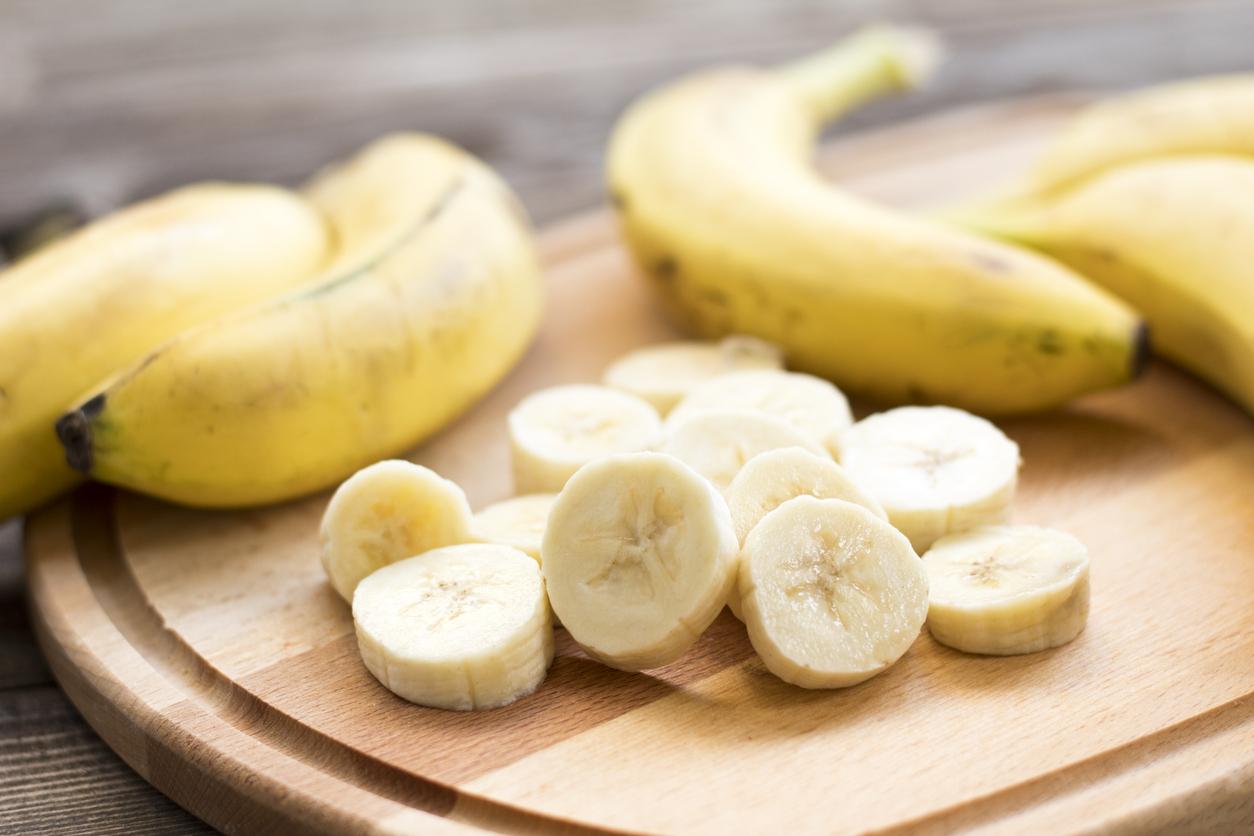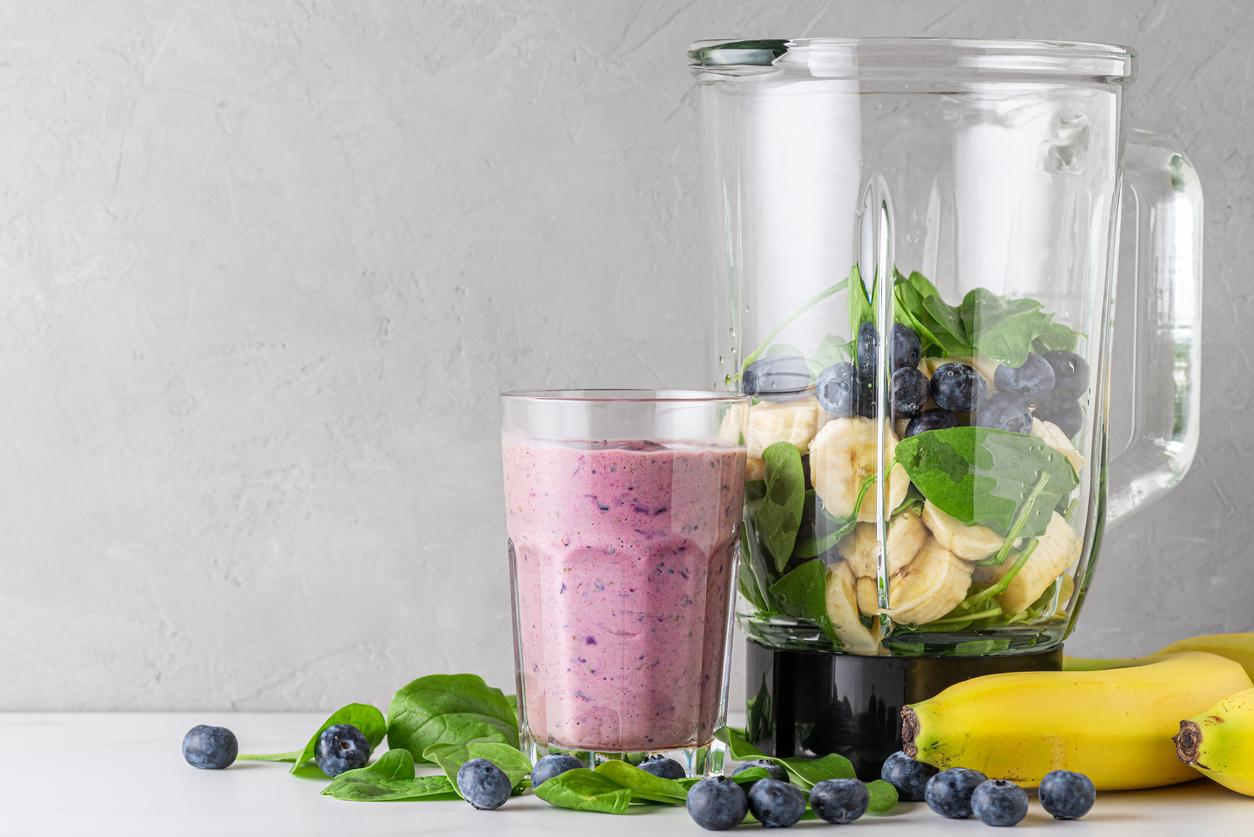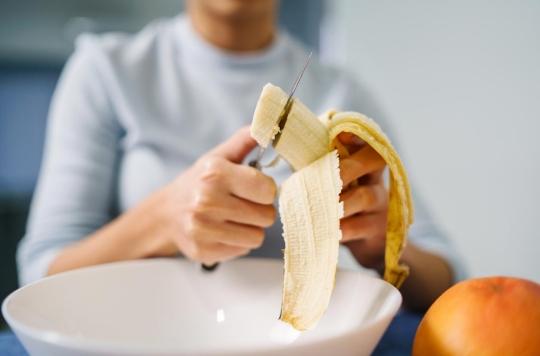
All about the banana
The banana is the most important food crop in the world after rice, maize and wheat. You can read how healthy the banana really is in this article.
First of all, bananas are low in sodium, but high in potassium and starch. Smaller amounts of calcium, copper, iodine, iron, phosphorus and zinc are also present, as are vitamin C (10mg/100g), vitamin A and some B vitamins.
Starch
The high starch content means that bananas are considered high in calories. This needs to be nuanced. The calorie content of a banana is about 100 kcal/100g and, if you know that a banana weighs between 100 and 200 grams, you can quickly calculate what this means in terms of calories. The starch in bananas is quite special: it is difficult to break down (especially when the banana is young and semi-ripe) in the stomach and small intestine and ends up in the large intestine practically unaffected. One speaks of ‘resistant starch’.
Constipation
In that sense, it brings no extra calories and is considered dietary fiber. It therefore causes a bulking effect (increase the intestinal mass) and is interesting for combating constipation.
This resistant starch is further broken down in the large intestine by the bacteria present there and gives rise to short-chain fatty acids, which have an anti-cancer effect, especially with regard to colon cancer. The acidification of the large intestine also means that the minerals (eg calcium) and trace elements are better absorbed and that the protein breakdown is slowed down, so that less ammonia and other bad-smelling substances are formed in the intestines.
By the way, unripe bananas are not so bad in other areas too. In some tropical countries, unripe bananas are eaten as medicine for intestinal complaints, especially diarrhea in children. Many raw bananas contain the substance leucocyanidin, a favonoid that stimulates the growth of mucosal cells and thus protects the stomach and intestines against, among other things, stomach ulcers and injuries caused by certain drugs, such as aspirin.
Gluten intolerance
Bananas are also interesting foods for children with celiac disease (or gluten intolerance). The presence of starch that is difficult to digest, the banana has in common with raw potatoes: it is known that the starch of raw potatoes is hardly broken down in the small intestine and ends up in the large intestine rather as dietary fiber.
When a potato is cooked, the starch is broken down in the stomach and small intestine. As a banana ripens, the amount of free sugar increases and the amount of ‘resistant starch’ decreases. The sugar content can rise from 1 to more than 20%, the vast majority of which is sucrose (65%), followed by glucose (20%) and fructose (15%).
A ripe banana is therefore much higher in calories than a green or semi-ripe banana. Athletes or people who make heavy efforts are therefore better off with ripe bananas than with semi-ripe bananas. The presence of quite large amounts of potassium (440 mg/100g) is beneficial for controlling blood pressure. As is known, sodium (salt) in most cases raises blood pressure, potassium has the opposite effect.
Dried apricots and raisins contain even more potassium! Another positive property of bananas is that they contain small amounts of the hormone melatonin. Melatonin is a hormone secreted by the brain (the epiphysis) and regulates our biological clock (wake-sleep rhythm). As we get older, our production of melatonin decreases, which means that the sleep rhythm can be disrupted.
Sleep disturbances
The American researcher and world expert in this field, Dr. Russel J. Reiter, recommends adopting a ‘melatonin-friendly’ way of life. For example, he suggests consuming foods that contain melatonin in the evening. These are oats, corn, cherries, tomatoes, but also bananas. People with sleep disorders can therefore try eating a banana cut into pieces for dinner together with a plate of (oatmeal) porridge. Isn’t the custom from ‘grandmother’s days’ to have a bowl of oatmeal porridge for dinner?
Oats are the richest source of melatonin and it is now also known that dairy products (milk, for example) contain proteins or pieces of proteins (peptides) that have a sleep-promoting effect. But more on this later. However, it is not all cookie and egg with bananas. In a number of rare cases, people can have an allergic reaction to the consumption of bananas (it is estimated 1 to 2 people in a thousand). The cause can be twofold.
In a number of cases, the allergic reaction is due to the presence of a series of biogenic amines (including tyramine) that occur in bananas. An increase in blood pressure can be caused by constriction of the blood vessels because the biogenic amines are not broken down quickly enough in the body. If you notice this effect, please consult your doctor.
Cross allergy
Another reason may be the presence of specific proteins in bananas, which are also found in latex (natural rubber). That is why it has been established in a number of cases that people who are allergic to natural rubber also have an allergic reaction when they eat bananas. In this case, one speaks of a cross-allergy, a phenomenon that occurs frequently in nature.
By the way, the browning of bananas is not a rotting process but a natural enzymatic reaction. This does not create any harmful products. The brown is even edible. Also, do not store bananas in the refrigerator, but in the cellar.
And as a bonus: the specific smell of bananas is caused by practically one substance, namely isopentyl acetate, which can be easily imitated synthetically and used as an aroma and flavor component. A chocolate filling ‘with bananas’ has almost nothing to do with bananas themselves.
This article is from the book “On Sensual Oysters and Addictive Chocolate” by Dr. ir. Eric De Maerteleire. In this book he answers the most frequently asked questions about nutrition. Professionally, De Maerteleire analyzed foodstuffs on a daily basis. This gave rise to his passion for the relationship between nutrition and health.
















